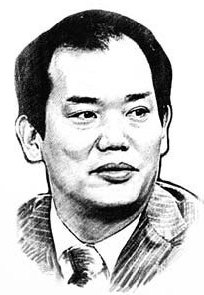What does the second half hold in store?
Updated: 2012-07-13 11:16
(China Daily)
|
|||||||||||
Q1
With analysts forecasting China's second-quarter GDP growth to hit a new low, do you envisage an even lower growth rate in the coming months? How much GDP growth do you forecast for the third quarter?
Q2
The central bank has already cut interest rates twice, first in June, then in July. How much do you think the interest rate cuts are helping the economy's growth? And do you think there is still room for further interest rate cuts and cuts in banks' reserve requirement ratios in the remaining months of the year?
Q3
While inflation is coming down, do you think it is coming down so abruptly as to threaten deflation? What's the likelihood of deflation emerging in China today?
Q4
Do you think a large increase in investment in government projects will help turn around the economy? Or do you think there are other ways to better-stimulate growth?
Zhu Baoliang

chief economist at the State Information Center, a think tank under the National Development and Reform Commission
A1
China's economic situation this year is better than in 2008. The second quarter will see the bottom, and growth will pick up in the third quarter, but it won't be the rapid increase seen in previous years.
My prediction is that the third-quarter GDP growth rate will be 8 percent, and 8.3 percent in the fourth quarter, which adds up to growth of around 8 percent for the whole year.
Eight percent is an appropriate level for both employment and inflation.
Unlike the massive unemployment seen in 2008, the job market remains steady, with some areas even offering higher salaries to compete for employees, suggesting that the economy is still within a comfort zone.
A2
Interest rates will be cut again once or twice this year, and there will also be two or three reductions in the reserve requirement ratio.
But despite all these efforts, the key figure to be looked at should be the actual amount of money injected into the economy, money supply growth.
If the above measures are adopted, new yuan lending this year will be around 9 trillion yuan ($1.4 trillion), up from 7.5 trillion yuan last year, and the broad money supply (M2) growth rate will be around 14 percent.
A3
Deflation is unlikely to occur in China as the authorities have already started to implement policy easing.
June's CPI of 2.2 percent was mainly dragged down by retreating food prices, which account for one-third of the basket and are heavily dependent on seasonal factors. CPI may pick up again in the second half.
Meanwhile, service prices remain high, meaning that some appreciation, such as in labor costs, is irreversible. Another reason is that commodities prices are already stabilizing, which will ease the pressure on downstream industries and create conditions for steady economic growth.
A4
Exports remain weak due to sluggish external demand, and consumption continues to be suppressed by low incomes, therefore the mission of stimulating growth will again fall on the shoulders of investment.
As the authorities maintain property curbs and the manufacturing sector struggles amid weak domestic and overseas demand, infrastructure will be the main destination for investment.
Infrastructure projects do not necessarily refer to highways and railways, subways and regional airports could be good choices for this round of investment.
Today's Top News
President Xi confident in recovery from quake
H7N9 update: 104 cases, 21 deaths
Telecom workers restore links
Coal mine blast kills 18 in Jilin
Intl scholarship puts China on the map
More bird flu patients discharged
Gold loses sheen, but still a safe bet
US 'turns blind eye to human rights'
Hot Topics
Lunar probe , China growth forecasts, Emission rules get tougher, China seen through 'colored lens', International board,
Editor's Picks

|

|

|

|

|

|





